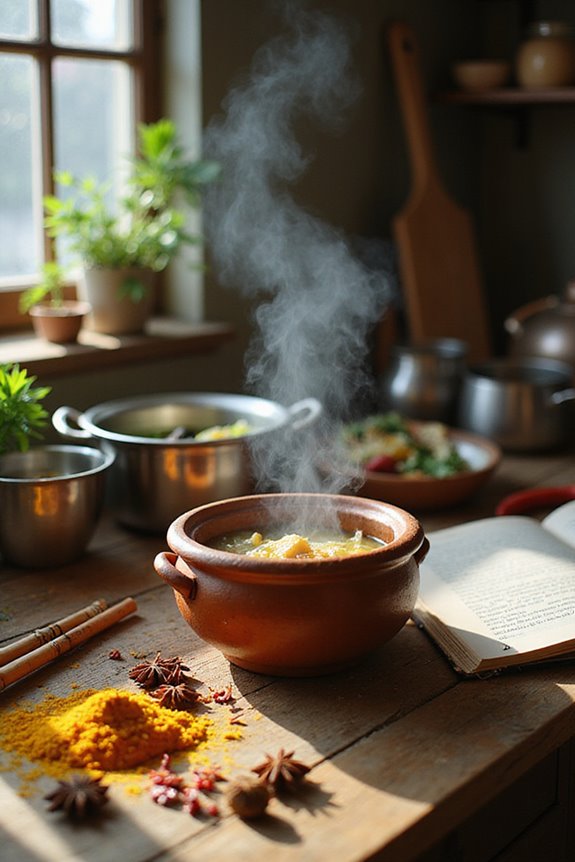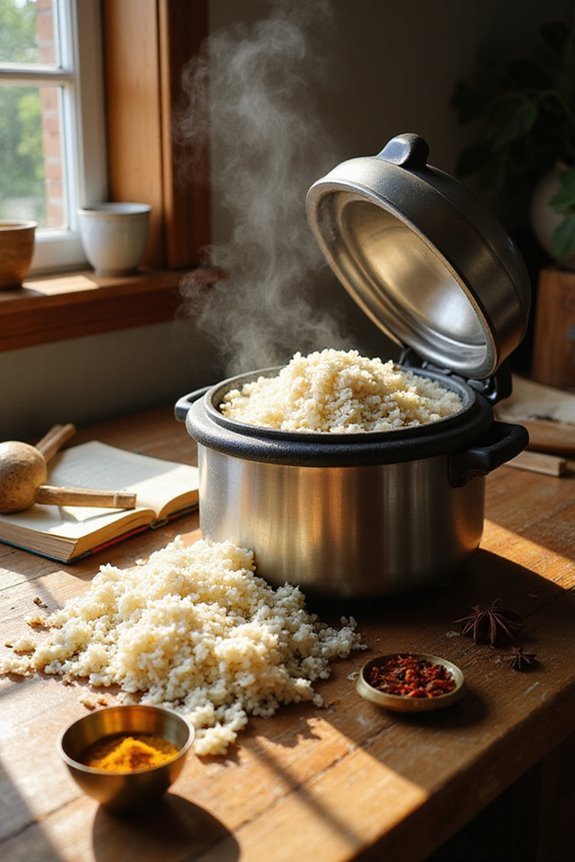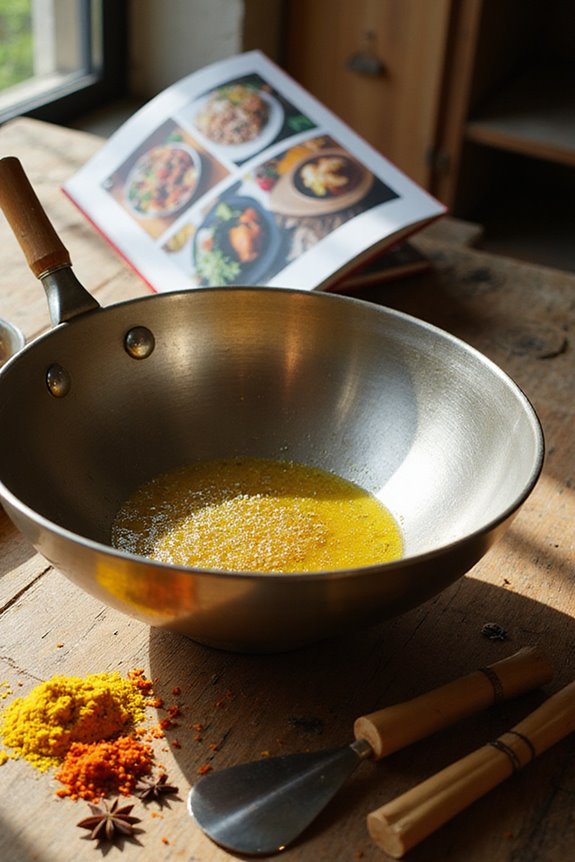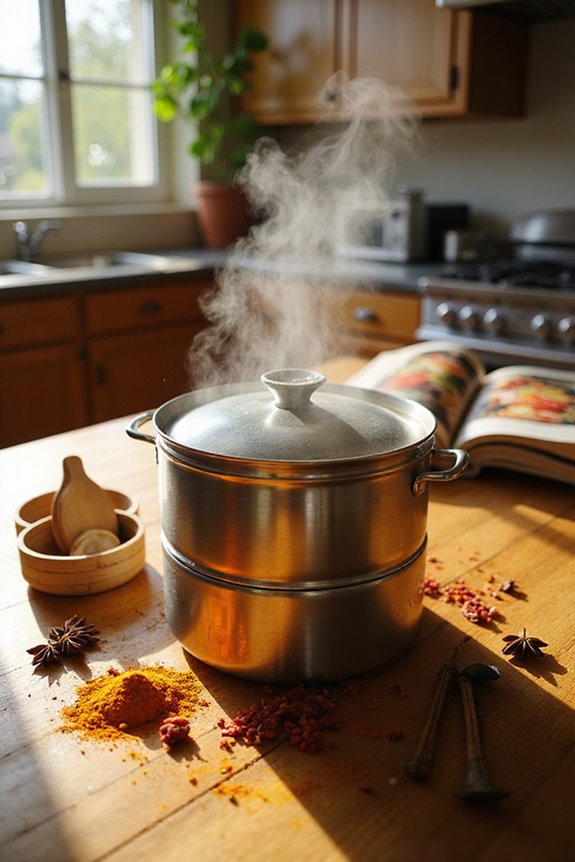Absolutely, we can use clay pots for soups! They’re delightful because they evenly distribute heat and lock in flavors. Plus, their porous nature helps maintain moisture, making our soups extra juicy and delicious. Just remember to soak them for 15-30 minutes before use and warm them gradually. Trust us, once you try a hearty stew in a clay pot, it’ll feel like a magical holiday meal. Stick with us, and we’ll share more tips for perfect soups!
Key Takeaways
- Clay pots provide even heat distribution, making them ideal for slow-cooking soups.
- Cazuelas are particularly effective for simmering broths and vegetable soups.
- Chamba pots hold heat well, enhancing the flavor of your soups.
- Korean and Japanese clay pots are perfect for controlling temperatures in medicinal soups.
- Remember to soak your clay pot before use to prevent cracking during cooking.
Safety of Clay Pots for Cooking
- Look for Certifications: Seek out clay pots certified free of lead and arsenic. Safety standards matter!
- Be Aware of Porosity: Remember, the magical porosity of clay means potential leaching. Choose unglazed pots for less risk!
- Avoid Damage: Steer clear of cracked or chipped pots. They’re like bringing home an unruly elf during the holidays—chaotic!
- Check Ingredients: Use caution with highly acidic foods in uncertified pots, as they can enhance leaching.
- Consider Food Safety: Always prioritize proper cleaning and maintenance, similar to how bamboo cutting boards require oiling to prevent degradation!
Let’s embrace toxin awareness and make our cooking adventure both safe and scrumptious! Together, we can create delicious memories!
Cooking Performance Benefits of Clay Pots
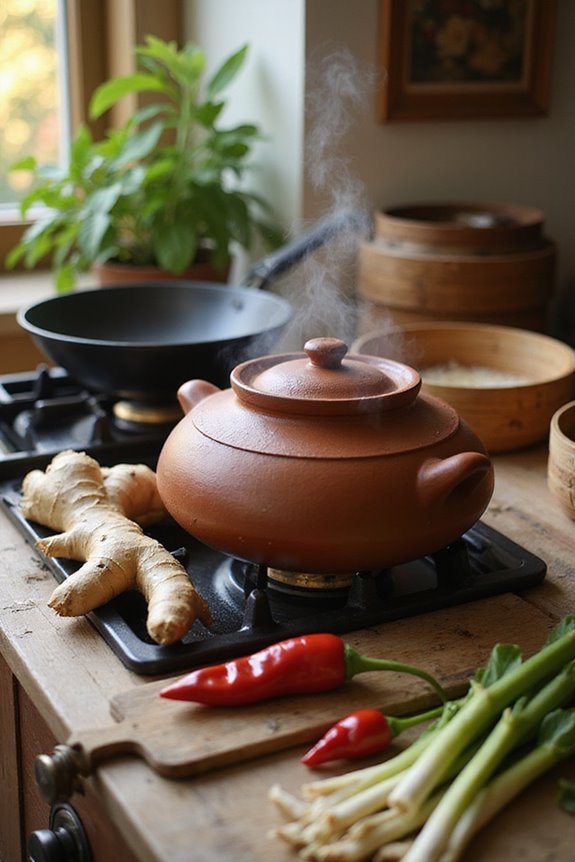
When we think about cooking performance, clay pots bring a delightful magic to our kitchen, ensuring our soups and stews are nothing short of spectacular. Their amazing heat retention maintains consistent cooking temperatures, reducing the risk of burning. Plus, the porous nature allows moisture to circulate, locking in juiciness and enhancing flavor.
Let’s explore some key benefits:
- Flavor Enhancement: Slow cooking develops richer, deeper profiles.
- Versatility: Great for simmering, braising, and baking.
- Energy Efficiency: You can cook at lower temperatures, saving power! Clay pots utilize even heat distribution for perfect results, enhancing both the taste and texture of your creations.
Nutritional Advantages of Using Clay Pots
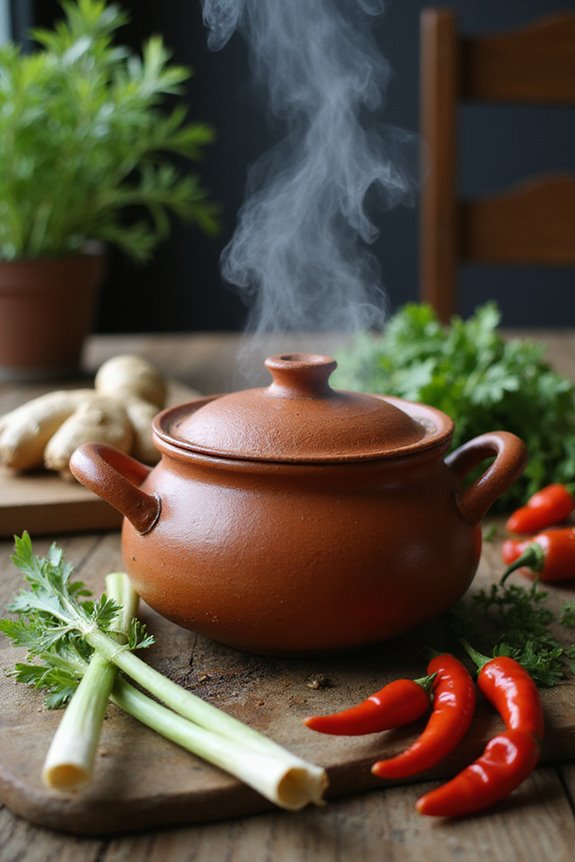
After enjoying the impressive cooking performance of clay pots, we should take a moment to appreciate the nutritional advantages they offer.
- Nutrient Retention: Clay pots are champions at preserving vitamins and minerals, thanks to their slow cooking methods.
- Moisture Preservation: They maintain moisture, keeping our soups juicy and enhancing the flavor of spices.
This magical cooking method helps reduce the need for added oils, making meals lighter and healthier, especially for our heart health during those festive feasts! Plus, reheating becomes a breeze as nutrients stay intact. Steamer baskets, which share similar characteristics of retaining nutrients and moisture, are another great option in our kitchen arsenal. So, let’s embrace these delightful pots as our culinary allies, ensuring our soups are not only delicious but brimming with goodness! Isn’t it wonderful to think we can enjoy nutritious meals while being eco-friendly? Happy cooking!
Practical Usage Tips for Clay Cookware
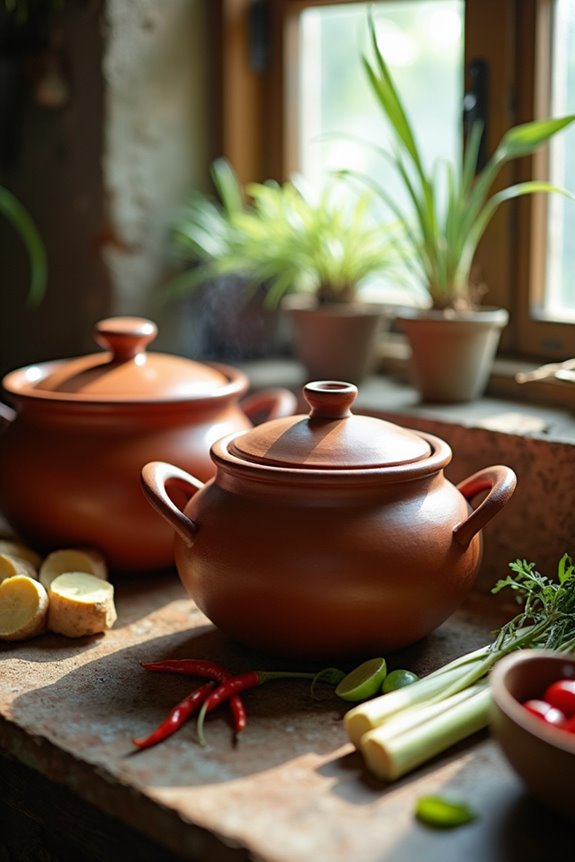
Using clay cookware for soup can be an exciting culinary adventure, especially when we embrace its unique features! Let’s plunge into clay pot preparation. First, soaking our pots for 15-30 minutes keeps them from cracking—think of it as giving them a rejuvenating bath before cooking! Don’t forget to warm our pots gradually over low heat. This prevents thermal shock and helps our soups simmer that delightful magic.
- Seal seams with parchment paper and flour paste for flavorful steam.
- Layer tough cuts of meat, vegetables, and spices for perfect flavor melding.
Watching water levels while steaming is key, and let’s avoid abrupt temperature changes to protect our beloved cookware. Additionally, using tri-ply construction in cookware helps achieve even heat distribution, enhancing the flavor of your soups. Happy cooking, everyone! Let’s create some delicious soups together!
Types of Clay Cookware Ideal for Soups
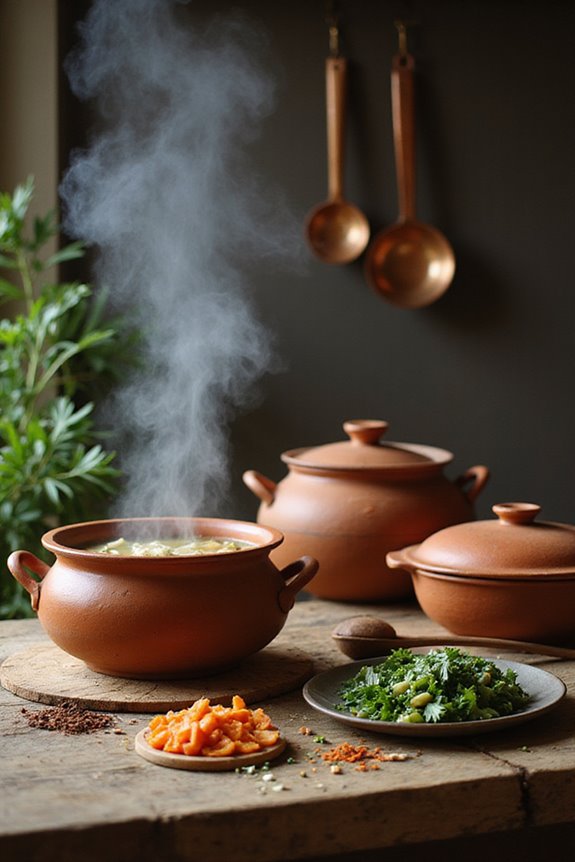
Exploring the types of clay cookware ideal for soups can open up a world of delightful culinary possibilities! Let’s plunge into some fabulous clay pot varieties that can elevate our soup game:
- Clay Pots: Perfect for slow-cooking soups and stews, these beauties guarantee even heat distribution.
- Cazuelas: Shallow and wide, they’re fantastic for simmering broths and vegetable soups from sunny Spain.
- Chamba Pots: Colombian gems that retain heat beautifully, making our soups rich and flavorful.
- Korean/Japanese Pots: Ideal for medicinal soups, these smaller pots let us control temperature with finesse. They also enhance heat retention properties, ensuring that flavors are developed effectively throughout the cooking process.
Benefits of Using Clay Pots Specifically for Soup
When we think about making soup, the benefits of using clay pots really shine through! These delightful pots offer fantastic flavor enhancement and even come with natural detoxification properties.
- Rich Flavor: Clay pots promote slow cooking, allowing flavors to mingle and deepen, making every spoonful a magical experience.
- Health Boost: Their alkaline nature helps neutralize acidity, creating a healthier soup that’s easier on our tummies!
- Nutrients Galore: Clay’s gentle heat retains essential vitamins and minerals, ensuring our soups remain packed with goodness. Additionally, the use of natural materials like clay aligns with sustainable cooking practices, further enhancing the benefits of your homemade soup.
Maintenance and Care for Clay Pots
To keep our delightful clay pots in tip-top shape, a bit of care goes a long way! Here are some magical maintenance tips to cherish our pots:
- Initial Prep: Soak new pots overnight to remove dust, followed by a two-day starch soak if you’re feeling fancy!
- Cleaning Techniques: Always cool them first! For tough stains, use warm water with baking soda. Natural scrubbers, like coconut scrapers, are our best friends!
- Drying & Storage Solutions: After washing, air dry them in sunlight. Store pots with lids slightly ajar to prevent mold — no one wants a moldy pot ruin a family soup night!
- Seasoning: Remember to oil pots lightly every few uses to keep them hydrated!
Let’s keep our clay pots as charming as our favorite recipes!
Frequently Asked Questions
Can I Use Clay Pots on Induction Cooktops?
We’re all dreaming of that perfect simmer, but let’s face it—many clay pots just don’t have that induction compatibility! However, with the right clay pot materials or converter disks, we can cook happily together!
How Long Do Clay Pots Last With Proper Care?
With proper care, our clay pots can last decades. By following key maintenance tips and understanding durability factors, we’re ensuring they become more resilient with time, enhancing our cooking experiences and fostering a deeper connection with our tradition.
Can I Store Leftovers in Clay Pots?
When it comes to leftover storage, we need to tread carefully with clay pots. Their porous nature raises safety concerns, so let’s make certain we use properly seasoned pots to keep our meals tasting great and safe.
Are There Specific Clay Pot Brands to Avoid?
When choosing clay pots, we should avoid brands with poor glaze quality and low pot durability. It’s essential to research, ensuring we select those that prioritize safety and longevity, fostering a sense of community shared in cooking.
Can I Use Clay Pots for High-Heat Frying?
While we love cooking with clay pots, high heat safety is a concern. They aren’t suitable for frying techniques requiring rapid temperature changes, as they can crack or release harmful substances. Let’s choose wisely!

